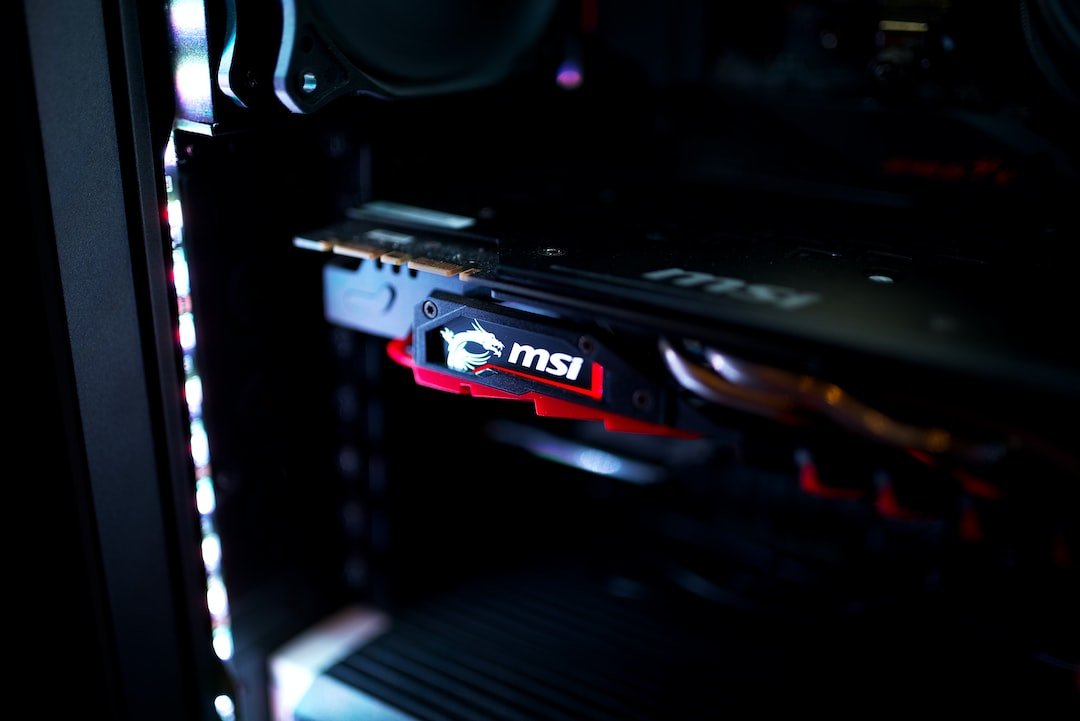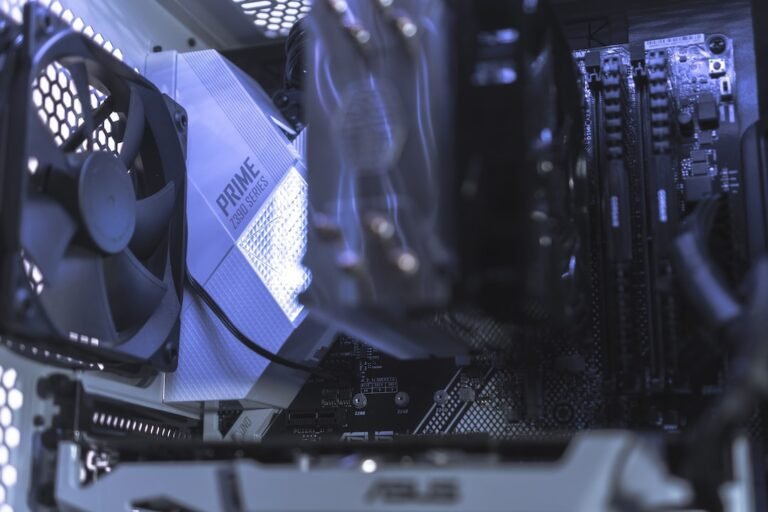Introduction
Are you tired of dealing with slow internet speeds, dropped connections, and other network issues? Don’t worry, you’re not alone. Many people experience problems with their routers and network connectivity, but the good news is that there are plenty of troubleshooting tips and techniques that can help you get back online quickly. In this article, we’ll explore some expert tips for router troubleshooting and resolving network connectivity issues. From basic steps like checking cables and restarting your router to more advanced techniques like updating firmware and optimizing settings, we’ve got you covered. So let’s dive in and get your network back on track!
Common Network Connectivity Issues
Before we jump into the troubleshooting tips, let’s take a quick look at some of the common network connectivity issues you might encounter. Understanding these problems can help you identify the root cause and find the most effective solution.
Slow Internet Speeds: Are web pages taking forever to load? Is streaming video constantly buffering? Slow internet speeds can be frustrating, but they can often be fixed with a few tweaks to your router settings.
Intermittent Connection Drops: If your connection keeps dropping, it can make it difficult to complete online tasks or enjoy a seamless streaming experience. This issue could be caused by interference, outdated firmware, or other factors.
Weak Wi-Fi Signal: Is your Wi-Fi signal strong in one room but weak in another? Weak Wi-Fi signals can be caused by distance from the router, thick walls, or other obstructions. Boosting your signal strength will improve coverage throughout your home.
- Inability to Connect: Can’t connect to your Wi-Fi network at all? This problem can be due to incorrect network settings, outdated drivers, or other configuration issues.
Now that we have a better understanding of the common network connectivity issues, let’s move on to the troubleshooting tips that can help you resolve them.
Troubleshooting Steps for Router Issues
1. Check Your Physical Connections
Before delving into more complex troubleshooting techniques, start with the basics. Check that all the cables connecting your router to the modem and devices are secure and correctly plugged in. A loose cable connection or a faulty cable can cause network connectivity issues. Additionally, make sure your modem is powered on and functioning properly.
2. Restart Your Router
A simple yet effective troubleshooting step is to restart your router. Power it off, wait for about 30 seconds, and then power it back on. This can help clear any temporary glitches or conflicts that may be causing connectivity problems. After restarting, give your router a few minutes to establish a stable connection.
3. Update Firmware
Outdated router firmware is a common cause of network issues. Manufacturers often release firmware updates that fix bugs and improve performance. Check the manufacturer’s website for any available firmware updates for your router model. Follow the instructions provided to update the firmware and ensure your router is running on the latest version.
4. Optimize Wi-Fi Settings
Adjusting your Wi-Fi settings can significantly improve your network connectivity. Start by changing the Wi-Fi channel on your router. Overlapping channels can cause interference, especially in densely populated areas. Experiment with different channels to find the one with the least interference.
You can also try changing the Wi-Fi frequency band to 5GHz if your router supports it. The 5GHz band offers less interference and faster speeds, although it has a shorter range compared to the 2.4GHz band.
5. Enhance Wi-Fi Signal
If you’re experiencing weak Wi-Fi signals in certain areas of your home, there are several ways to improve signal strength:
Change Router Placement: Position your router in a central location to ensure equal coverage throughout your home. Avoid placing it near thick walls or obstructions that can block the signal.
Use Wi-Fi Extenders or Mesh Systems: Wi-Fi extenders and mesh systems can help amplify your signal and extend coverage to areas with weak or no connectivity.
Upgrade to a Higher Gain Antenna: Some routers allow for the replacement of external antennas. Consider upgrading to higher gain antennas to boost signal strength.
6. Check Network Settings
Incorrect network settings can cause connectivity problems. Double-check your router’s network settings, including SSID (Wi-Fi network name), password, and security settings. Ensure they match the settings configured in your devices.
7. Disable Bandwidth-Hogging Applications
Certain applications or devices may consume a significant amount of your network bandwidth, causing slower internet speeds for other devices. Identify bandwidth-hogging applications or devices and limit their usage or prioritize network traffic using Quality of Service (QoS) settings on your router.
8. Factory Reset as a Last Resort
If all else fails, a factory reset can help resolve persistent network issues. Keep in mind that a factory reset will erase all personalized router settings, so make sure to note them down before performing the reset. Consult your router’s user manual or manufacturer’s website for instructions on performing a factory reset.
Conclusion
By following these expert tips for router troubleshooting and resolving network connectivity issues, you can get your network back up to speed. From checking physical connections and restarting your router to updating firmware and optimizing settings, these troubleshooting steps will help you identify and resolve common network problems. Remember to always refer to your router’s user manual or the manufacturer’s website for specific instructions related to your router model. Happy troubleshooting!
FAQ
Here are some frequently asked questions about router troubleshooting and network connectivity issues:
| Question | Answer |
|---|---|
| How do I set up my home network? | Setting up a home network involves connecting your router to your modem, configuring the network settings, and connecting your devices wirelessly or via Ethernet cables. Refer to our comprehensive guide on home network setup for detailed step-by-step instructions. |
| What are some common router troubleshooting steps? | Common router troubleshooting steps include checking physical connections, restarting the router, updating firmware, optimizing Wi-Fi settings, enhancing the Wi-Fi signal, checking network settings, disabling bandwidth-hogging applications, and performing a factory reset as a last resort. Refer to our article on router troubleshooting for more detailed steps. |
| How can I improve my wireless router security? | To enhance your wireless router security, you can change the default login credentials, enable network encryption (WPA2), disable remote management, update firmware regularly, and enable guest networks. For more in-depth information, read our guide on wireless router security. |
| Which router is best for gaming? | Gaming routers offer features like prioritized gaming traffic, low latency, and high-speed connections. Check out our detailed gaming router buying guide for expert recommendations and tips to choose the best gaming router for your needs. |
| What are mesh Wi-Fi systems, and how do they work? | Mesh Wi-Fi systems use multiple nodes to create a single, seamless network. They eliminate Wi-Fi dead zones and ensure consistent coverage throughout your home. Dive deeper into mesh Wi-Fi systems to learn more about how they work and which systems are recommended. |
| Are there routers available for high-speed 5G internet connectivity? | Yes, there are routers specifically designed to support high-speed 5G internet connectivity. Discover more about these innovative routers and their benefits in our article on 5G routers for high-speed internet connectivity. |
| Can routers be used for parental control? | Yes, routers can be used for parental control by enabling features like content filtering, time scheduling, and device-specific restrictions. Explore our guide on parental control routers to learn more about how to set up and manage these features effectively. |
| What is open-source router firmware, and how can I benefit from it? | Open-source router firmware like DD-WRT and OpenWrt offers advanced customization options and additional features. Learn all about the advantages and installation process in our guide on open-source router firmware. |
| How can I ensure router security when using a VPN? | When using a VPN with your router, it’s essential to choose a VPN router with built-in support or manually configure your router. Follow our guide on VPN router security to understand the benefits of VPN routers and how to set them up securely. |
| Can routers integrate with smart home devices? | Yes, routers can integrate with smart home devices to provide seamless connectivity and control. Read our article on smart home integration to explore the possibilities and discover how to optimize your smart home setup using routers. |
| Do fiber internet connections require specific routers? | Fiber internet connections often require routers that can handle higher speeds. Check out our guide on fiber internet routers to learn more about the features and specifications you should look for when selecting a router for fiber internet connectivity. |
Further Reading
Here are a few real external websites where you can find more information about router troubleshooting and resolving network connectivity issues:
| Website | Description |
|---|---|
| Help Desk Geek | Help Desk Geek offers comprehensive articles, guides, and tutorials for resolving technical issues, including router troubleshooting. |
| Lifewire | Lifewire provides practical advice and troubleshooting tips for various tech-related topics, including router troubleshooting and networking. |
| PCMag | PCMag offers reviews, buying guides, and tips for consumer electronics, including routers and networking solutions. |
| RouterSecurity.org | RouterSecurity.org is a dedicated resource that focuses on securing routers and provides guidance on router troubleshooting and maintenance. |
Remember, a well-functioning router is the backbone of a reliable network. By following these troubleshooting tips and techniques, you’ll be well-equipped to resolve network connectivity issues and enjoy seamless internet connectivity.




